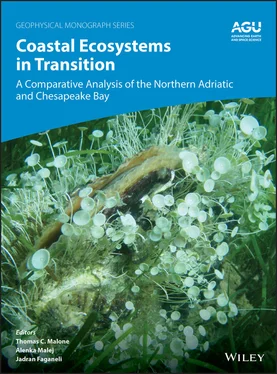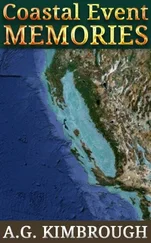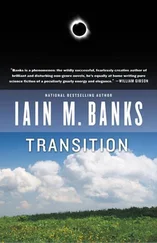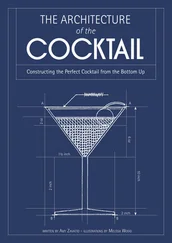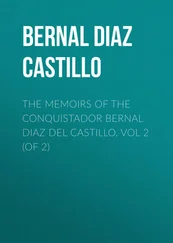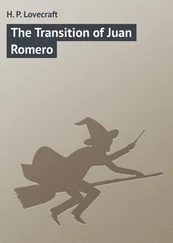48 Marchina, C., Bianchini, G., Natali, C., Pennisi, M., Colombani, N., Tassinari, R., & Knoeller, K. (2015). The Po river water from the Alps to the Adriatic Sea (Italy): New insights from geochemical and isotopic (δ18D–δD) data. Environmental Science and Pollution Research International, 22(7), 5184–5203. https://doi:10.1007/s11356‐014‐3750‐6
49 Meier, H.E.M., Eilola, K., Almroth‐Rosell, E., Schimanke, S., Kniebusch, M., Höglund, A., et al. (2018). Disentangling the impact of nutrient load and climate changes on Baltic Sea hypoxia and eutrophication since 1850. Climate Dynamics, 53(1–2), 1145–1166. https://doi:10.1007/s00382‐018‐4296‐y
50 Milly, P.C., Dunne, K.A., & Vecchia, A.V. (2005). Global pattern of trends in streamflow and water availability in a changing climate. Nature, 438(7066), 347–350. https://doi:10.1038/nature04312
51 Moyer, D.L., Hirsch, R.M., & Hyer, K.E. (2012). Comparison of two regression‐based approaches for determining nutrient and sediment fluxes and trends in the Chesapeake Bay watershed (Scientific Investigations Report 2012‐5244, 118 pp.). Reston, VA: US Geological Survey.
52 Murphy, R.R., Kemp, W.M., & Ball, W.P. (2011). Long‐term trends in Chesapeake Bay seasonal hypoxia, stratification, and nutrient loading. Estuaries and Coasts, 34(6), 1293–1309. https://doi:10.1007/s12237‐011‐9413‐7
53 Najjar, R.G., Pyke, C.R., Adams, M.B., Breitburg, D., Hershner, C., Kemp, M., et al. (2010). Potential climate‐change impacts on the Chesapeake Bay. Estuarine, Coastal and Shelf Science, 86(1), 1–20. https://doi:10.1016/j.ecss.2009.09.026
54 New York State Department of Environmental Conservation (2007). New York State tributary strategy for Chesapeake Bay restoration.
55 Palmeri, L., Bendoricchio, G., & Artioli, Y. (2005). Modelling nutrient emissions from river systems and loads to the coastal zone: Po River case study, Italy. Ecological Modelling, 184(1), 37–53. https://doi:10.1016/j.ecolmodel.2004.11.007
56 Pennsylvania Department of Environmental Protection (2004). Pennsylvania's Chesapeake Bay tributary strategy.
57 Pizzuto, J., Schenk, E.R., Hupp, C.R., Gellis, A., Noe, G., Williamson, E., et al. (2014). Characteristic length scales and time‐averaged transport velocities of suspended sediment in the mid‐Atlantic Region, USA. Water Resources Research, 50(2), 790–805. https://doi:10.1002/2013wr014485
58 Rankinen, K., Keinänen, H., & Cano Bernal, J. E. (2016). Influence of climate and land use changes on nutrient fluxes from Finnish rivers to the Baltic Sea. Agriculture, Ecosystems and Environment, 216, 100–115. https://doi:10.1016/j.agee.2015.09.010
59 Rice, K.C., & Jastram, J.D. (2014). Rising air and stream‐water temperatures in Chesapeake Bay region, USA. Climate Change, 128(1–2), 127–138. https://doi:10.1007/s10584‐014‐1295‐9
60 Rice, K.C., Moyer, D.L., & Mills, A.L. (2017). Riverine discharges to Chesapeake Bay: Analysis of long‐term (1927–2014) records and implications for future flows in the Chesapeake Bay basin. Journal of Environmental Management, 204(Pt 1), 246–254. https://doi:10.1016/j.jenvman.2017.08.057
61 Rinaldi, A. (2014). Fioriture algali in Adriatico. Il bacino padano‐adriatico tra sviluppo e scienza. Brossura cucita.
62 Salvetti, R., Azzellino, A., & Vismara, R. (2006). Diffuse source apportionment of the Po river eutrophying load to the Adriatic sea: Assessment of Lombardy contribution to Po river nutrient load apportionment by means of an integrated modelling approach. Chemosphere, 65(11), 2168–2177. https://doi:10.1016/j.chemosphere.2006.06.012
63 Sanford, W.E., & Pope, J.P. (2013). Quantifying groundwater's role in delaying improvements to Chesapeake Bay water quality. Environmental Science and Technology, 47(23), 13330–13338. https://doi:10.1021/es401334k
64 Scroccaro, I., Ostoich, M., Umgiesser, G., De Pascalis, F., Colugnati, L., Mattassi, G., et al. (2010). Submarine wastewater discharges: dispersion modelling in the Northern Adriatic Sea. Environmental Science and Pollution Research International, 17(4), 844–855. https://doi:10.1007/s11356‐009‐0273‐7
65 Seagle, S.W., Pagnotta, R., & Cross, F.A. (1999). The Chesapeake Bay and Northern Adriatic Sea drainage basins: Land‐cover and nutrient export. In T.C. Malone, A. Malej, L.W. Harding Jr., N. Smodlaka, R.E. Turner (Eds.), Ecosystems at the land‐sea margin: Drainage basin to coastal sea (Coastal and Estuarine Studies, Vol. 55, pp. 7–27). Washington, DC: American Geophysical Union.
66 Sekulić, B., Martinis, M. & Nađ, K. (2004). Estimate of sea loading by pollutants originating from the littoral counties in the Republic of Croatia. Chemistry and Ecology, 20(6), 437–447. https://doi:10.1080/02757540412331304199
67 Sharpley, A., Jarvie, H.P., Buda, A., May, L., Spears, B., & Kleinman, P. (2013). Phosphorus legacy: Overcoming the effects of past management practices to mitigate future water quality impairment. Journal of Environmental Quality, 42(5), 1308–1326. https://doi:10.2134/jeq2013.03.0098
68 Shenk, G.W., & Linker, L.C. (2013). Development and application of the 2010 Chesapeake Bay Watershed Total Maximum Daily Load Model. Journal of the American Water Resources Association, 49(5), 1042–1056. https://doi:10.1111/jawr.12109
69 Shields, C.A., Band, L.E., Law, N., Groffman, P.M., Kaushal, S.S., Savvas, K., et al. (2008). Streamflow distribution of non‐point source nitrogen export from urban‐rural catchments in the Chesapeake Bay watershed. Water Resources Research, 44(9). https://doi:10.1029/2007wr006360
70 Sinha, E., Michalak, A.M., & Balaji, V. (2017). Eutrophication will increase during the 21st century as a result of precipitation changes. Science, 357(6349), 405–408. https://doi:10.1126/science.aan2409
71 Stachowitsch, M. (2014). Preface “Coastal hypoxia and anoxia: a multi‐tiered holistic approach.” Biogeosciences, 11(8), 2281–2285. https://doi:10.5194/bg‐11‐2281‐2014
72 Teodosiu, C., Barjoveanu, G., & Teleman, D. (2003). Sustainable water resources management 1. River basin management and the EC Water Framework Directive. Environmental Engineering and Management Journal, 2(4), 377–394.
73 Tesi, T., Miserocchi, S., Acri, F., Langone, L., Boldrin, A., Hatten, J.A. & Albertazzi, S. (2013). Flood‐driven transport of sediment, particulate organic matter, and nutrients from the Po River watershed to the Mediterranean Sea. Journal of Hydrology, 498, 144–152. https://doi:10.1016/j.jhydrol.2013.06.001
74 Testa, J.M., Li, Y., Lee, Y.J., Li, M., Brady, D.C, Di Toro, D.M., et al. (2014). Quantifying the effects of nutrient loading on dissolved O2 cycling and hypoxia in Chesapeake Bay using a coupled hydrodynamic–biogeochemical model. Journal of Marine Systems, 139, 139–158. https://doi:10.1016/j.jmarsys.2014.05.018
75 Testa, J.M., Lyubchich, V., & Zhang, Q. (2019). Patterns and trends in Secchi disk depth over three decades in the Chesapeake Bay estuarine complex. Estuaries and Coasts, 42(4), 927–943. https://doi:10.1007/s12237‐019‐00547‐9
76 The EU.WATER Project (2010). Transnational integrated management of water resources in agriculture for European water emergency control (47 pp.).
77 Thompson, S.E., Basu, N.B., Lascurain Jr., J., Aubeneau, A., & Rao, P.S.C. (2011). Relative dominance of hydrologic versus biogeochemical factors on solute export across impact gradients. Water Resources Research, 47W00J05. https://doi:10.1029/2010WR009605
78 US Department of Agriculture, & US. Environmental Protection Agency (1999). Unified national strategy for animal feeding operations. Washington, DC.
79 US Environmental Protection Agency (2000). Fact Sheet 1.0—Stormwater Phase II Final Rule: An overview. Washington, DC.
80 US Environmental Protection Agency (2010). Chesapeake Bay Total Maximum Daily Load for nitrogen, phosphorus and sediment. Annapolis, MD.
Читать дальше
